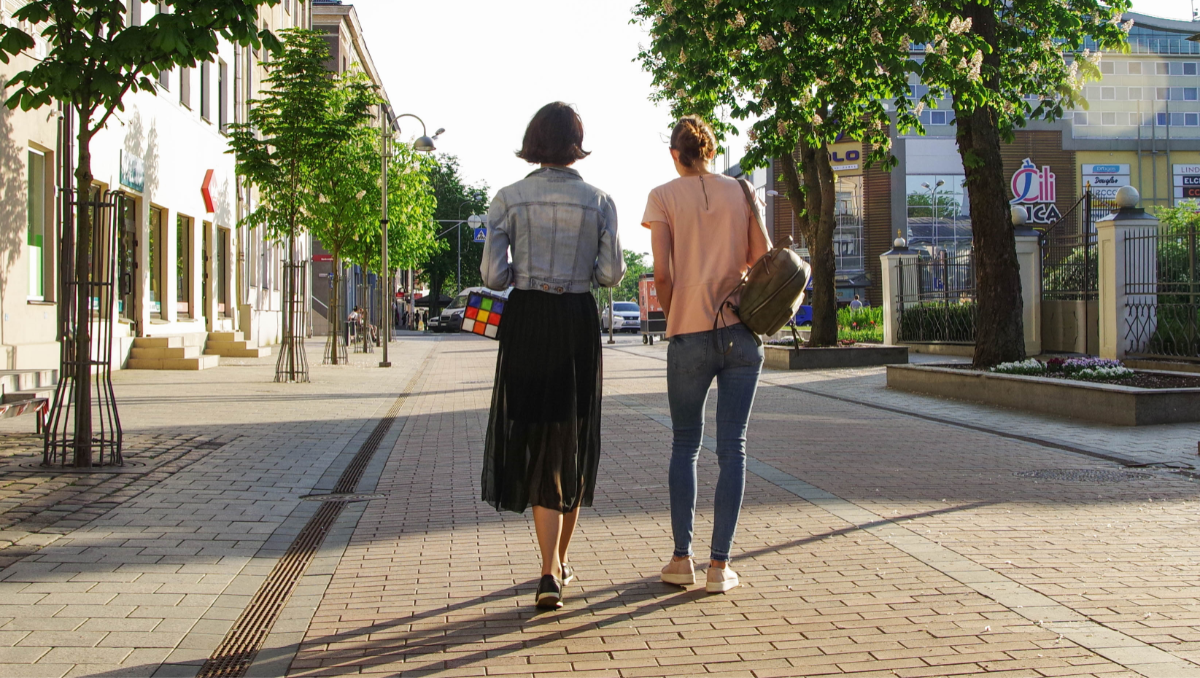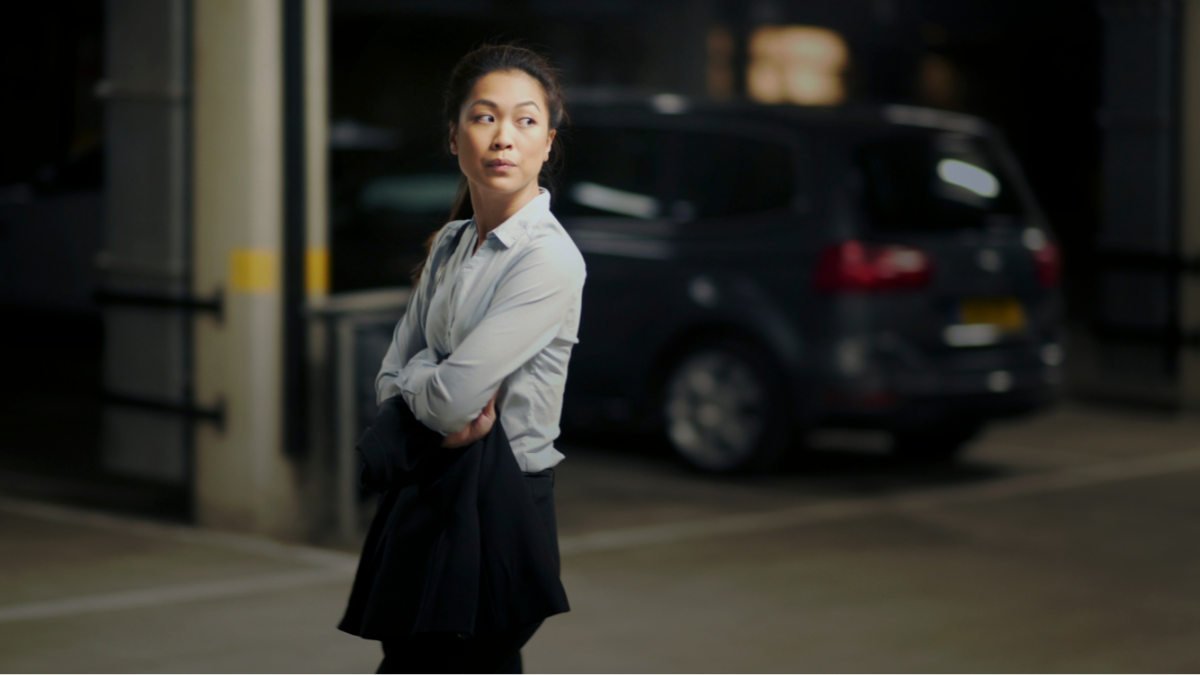This anti-bullying PSA acts out online comments in real life. It's an uncomfortable watch.
It's not "just the internet." Online harassment is serious business.
Bullying is just as wrong when it happens online as it is in person. So why does one seem to be so much more acceptable than the other?
A new anti-bullying campaign and PSA called "In Real Life," spearheaded by Monica Lewinsky, takes actual insults people have said online and brings them into the physical world. While actors portray the bullies and their victims in the video, the reactions of unsuspecting onlookers are genuine.

The PSA opens with a pleasant scene that quickly turns jarring. Two men are sitting together in a coffee shop, when a stranger walks up to their table. "Gay people are sick, and you should just kill yourselves!" he tells them.
This kind of interaction is not something you see that often in the real world (though it does happen). On the internet, however, that type of comment from a stranger isn't just normal, it's actually kind of tame.
Later in the video, a woman gets screamed at for being a "fat bitch" and a Muslim woman gets called a "terrorist." In all of the scenarios, bystanders — who were not involved in the social experiment — look on with horror.

A number of studies show why people who wouldn't bully someone to their face feel emboldened to do it online.
Anonymity, the ability to say or do whatever you want with little or no consequence for your actions, plays a role, but it's far from the only reason people engage in cyberbullying. The performative nature of online harassment also encourages others to pile on the target, whether they have a stake in the conversation or not. Mob mentality dictates that the more people go in on the target, the less any single person might feel responsible for negative outcomes. More than anything else, though, the barrier of the internet between bully and victim creates an empathy gap.
On the internet, regular people — your neighbors, coworkers, friends, acquaintances, and even family members — are all susceptible to becoming bullies, making it that much more important to think critically about the effects of our actions and behaviors online.

Online harassment is so much more than being "just the way the internet is."
"One thing people don’t necessarily realize about being threatened or dog-piled online is how much it can undermine your real-world sense of safety," author Sady Doyle explains in a Twitter direct message. Doyle has experienced escalating bullying and harassment online for years, especially during the 2016 election season, in response to her writing on Hillary Clinton's campaign.
Threats of physical violence and stalking across online platforms became normal to Doyle. Once an influential Twitter user took aim at her, to win that account's approval, their followers would engage in a game of one-upmanship harassment. Doyle began to worry more and more about how it would end. Scheduled book readings brought on a new sort of anxiety, as she feared that any of her online tormentors would be able to easily confront her in person. Thankfully, it never happened.
"I think that lost sense of safety is really what the impact is," she writes. "There’s mental health stuff, obviously — anyone with a tendency to depression, which I have, will internalize certain mean comments and play them back in a low moment — but it’s mostly the realization that there are people out there that want to hurt you, or your loved ones, and that you can’t necessarily recognize those people on sight, that is so damaging."
People shouldn't have to live in fear, and that's why campaigns like "In Real Life" are so important.
"It’s a stark and shocking mirror to people to rethink how we behave online versus the ways that we would behave in person," Lewinsky told People magazine about the project.
Saying that while "there are probably hundreds of thousands, if not millions" of insults that have been written about her online and in print, personal confrontations were much, much less common. "When you are with someone, when you see someone face to face, you are reminded of their humanity."

Unlike Doyle, you probably don't have to worry about online harassers showing up at scheduled appearances, and unlike Lewinsky, you probably aren't an internationally known political lightning rod of the late '90s. Even so, the lessons contained in this video — not to say things online that you wouldn't say to someone's face, to remember that real people are on the receiving end of every online comment, and more — are applicable to all of us. Online bullying isn't the exact same thing as the physical playground-style bullying we've heard about all of our lives, but its effects on the target's sense of well-being is every bit as real.
Whether you've been the bully, the bullied, or just a bystander, there are lessons we can learn from this powerful PSA, which you can watch below.
- High school girl shares perfect response to bullies - Upworthy ›
- Cyber safety educator warns parents about Omegle platform - Upworthy ›
- Monica Lewinsky opens up about her powerful new PSA - Upworthy ›
- Monica Lewinsky teams up with Reformation for new campaign - Upworthy ›
- Man's response to kid on Omegle brings people to tears - Upworthy ›
- Mom shows heartbreaking reality of preschool 'mean girls' - Upworthy ›
- Mom reveals what most parents miss when teaching their kids about bullies - Upworthy ›
- Mom makes 'controversial' decision to remove young daughter's mustache - Upworthy ›




 Newborn's first cry marks a fresh beginning.
Newborn's first cry marks a fresh beginning. Newborn baby.
Newborn baby.



 Women walking down a street.Image via Canva Photos.
Women walking down a street.Image via Canva Photos.  Woman aware of her surroundings in a parking garage. Image via Canva Photos.
Woman aware of her surroundings in a parking garage. Image via Canva Photos.
 "You're hilariously brilliant at everything you hate."
"You're hilariously brilliant at everything you hate."  "Bridget is authentically herself…and triumphs in her own way."
"Bridget is authentically herself…and triumphs in her own way."  "They're written in some curious language that I can't really understand."
"They're written in some curious language that I can't really understand."